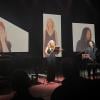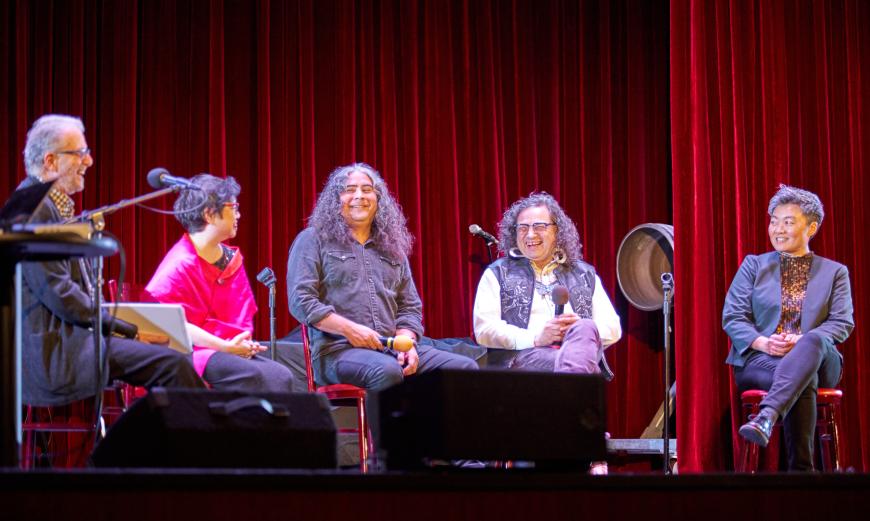
As his customary gesture of welcome, director Charles Amirkhanian invited all participating composers to the stage of Chinatown’s Great Star Theater for an introductory round of applause to kick off the 26th edition of the Other Minds Festival on Thursday, Oct. 13. This year’s lineup includes returning OM veterans Kui Dong, Mari Kimura, and Joëlle Léandre, plus first-timers Lauren Newton, Lars Petter Hagen, Dominic Murcott, Hanna Hartman, Theresa Wong, Guillermo Galindo, and Raven Chacon; in addition, Other Minds’ percussion ensemble will present the U.S. premiere of Amirkhanian’s piece Ratchet Attach It.
The choice of venue was meaningful for an organization that is dedicated both to the presentation of new music and to the curation and preservation of its historical roots, as the Great Star (and other Chinatown stages, like the long-shuttered Mandarin Theatre) played a formative role in the musical education of the late Lou Harrison — then a youngling unable to afford the high ticket prices at San Francisco Opera but immediately seduced by the sounds and sights of the Cantonese and Beijing productions offered in the city’s bustling Chinese district. The composer would return to Chinatown to source the many percussion instruments that populate his ultramodern compositions of the 1930s and early ’40s.
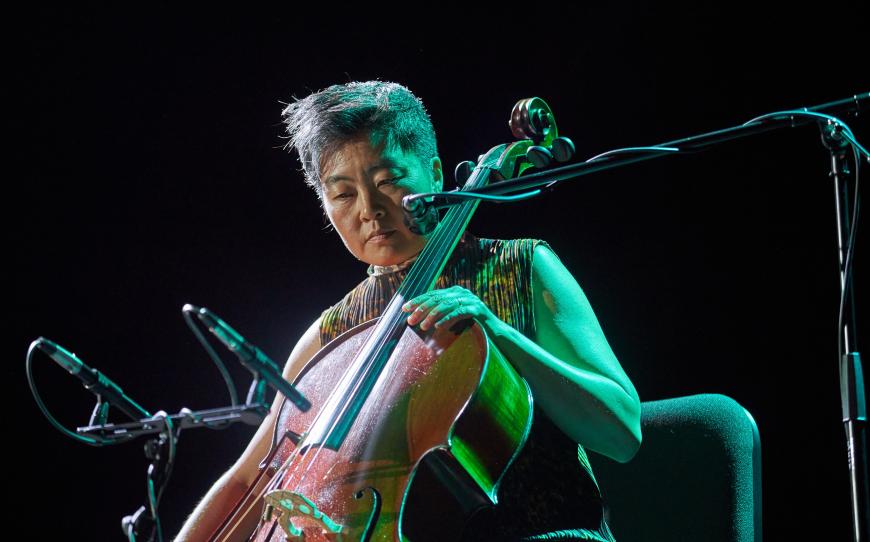
Decades later, Cantonese lyrics returned to the hall of the Great Star, toward the end of Theresa Wong’s spellbinding Fluency of Trees, a new work for solo cello and voice that explores original harmonic territories by retuning the instrument to just intonation — a system of tuning that privileges whole-number ratios between its pitches. Aided by judicious amplification and the space’s four-channel spatial audio, Wong’s cello resonated into a dizzying array of partials, emerging from low string drones and dancing across the hall like tenuous will-o’-the-wisps.
Elsewhere, Wong abandoned the bow in favor of gentle pizzicato passages, self-accompanying a whimsical multilingual text (in Cantonese and Italian) in a fragmented meditation on trees, wood, youth, and life. By preparing the strings with clips in this section, Wong transformed the cello’s lustrous voice into a set of muted gongs. Throughout the performance, her command of the broad range of experimental techniques was so effortless and so natural that one would be forgiven for assuming there’s actually nothing “strange” about the way she plays the cello — despite the instrument having been transformed into an entirely novel concept.
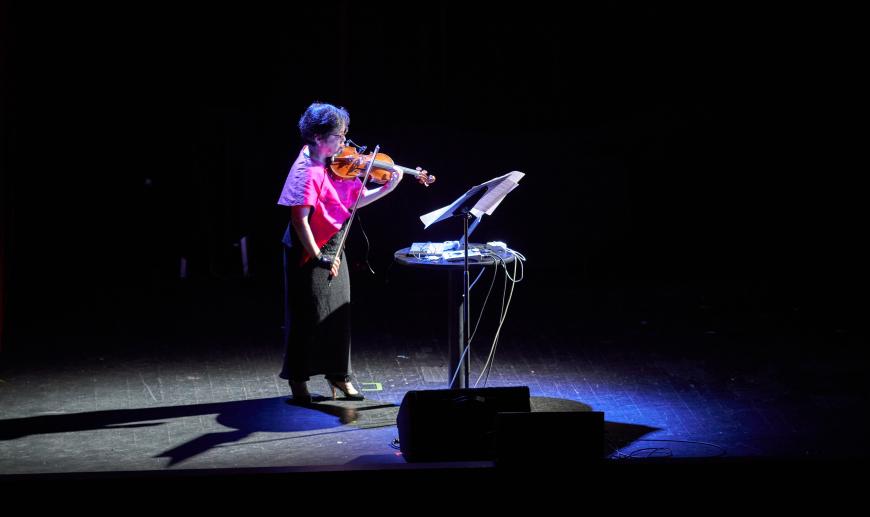
By contrast, Mari Kimura’s variously augmented violin seemed much more closely indebted to the performance traditions of the past 200 years. Kimura’s trademark subharmonic technique extends the range of the instrument below its lowest open string (and seemingly beyond the laws of physics), as she demonstrated in her opening selection, JanMaricana. The low tones, produced by applying excessive but exact bowing pressure, had an almost electronic quality, despite the entirely acoustic nature of that performance.
For her other three pieces, Kimura employed a MUGIC controller, a sensor of her own development that allows the harnessing of the residual or preparatory gestures inherent in bowing for controlling electronic parameters. In her original D’Alembert Caprice, acoustic violin and electronically processed sounds seemed to occupy separate spaces, their relation a mere juxtaposition. In Dai Fujikura’s Motion Notions, the two components were more immediately integrated, with the electronics shadowing the violin in ghostly processed harmonizations. The last selection, Rossby Waving, incorporated computer-generated graphics to visualize the kind of atmospheric and climate events caused by the titular phenomenon. Here again the bowing sensor seemed more immediately connected to the audible results, affecting the ostinato playing of the acoustic violin with various sampling and mangling processes.
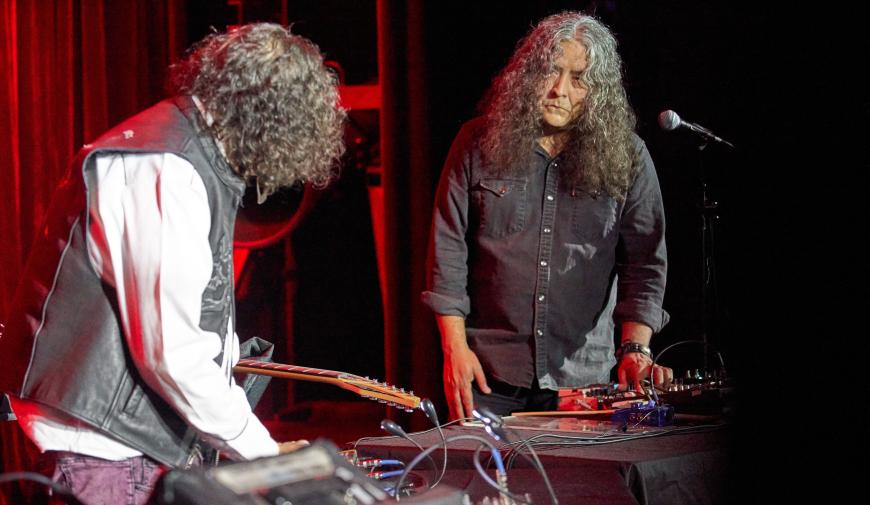
The second half of the concert consisted of a single improvised set by composers (and frequent collaborators) Raven Chacon and Guillermo Galindo. A vast array of electronic devices, arranged over two large tables, provided plenty of materials for the two to weave, shape, and coax an ever-changing stream of sound — sometimes gently rippling, elsewhere threatening to collapse the 97-year-old theater with bone-rattling low frequencies. Galindo occasionally stroked a supine electric guitar with a long feather, the effect of this gentle nudge amplified a hundredfold by a network of delay and distortion pedals; Chacon produced a whistle and a recorder to record layers of expressively trilling solos. There were gliding and droning sections, screaming walls of feedback that collapsed into revving rhythmic patterns, moments of unexpected serenity within sounds that could have been imagined as well as heard.
Chacon and Galindo performed with focus and aplomb, clearly practiced in each other’s sonic proclivities, and managed to keep the room enthralled for the better part of 40 minutes. As the hall briefly returned to silence before the final applause, it was as if our ears had been shaped anew through the sonic vortex.




